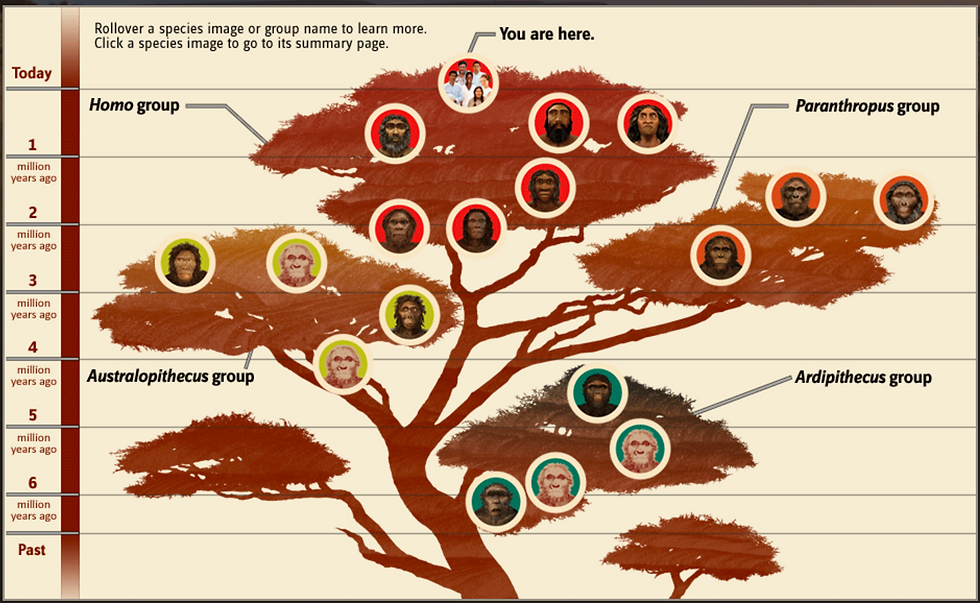Engaged with science, cheating on history
- Sabrina Linzau
- Mar 31, 2016
- 2 min read

A lot of people think that humans do not have any common ancestors with other organisms. However, that is a misconception. The Natural History Smithsonian has tons of evidence in the Hall of Human Origins that proves it is a misconception. However, before I proceed with this paper, I want to make it clear that I personally disagree with the view that we have common ancestors with other organisms.
In the Natural History Museum, there were several kinds of evidence that humans have common ancestors. Three kinds of evidence that I will be talking about here are: DNA evidence, fossils, and human behavior.
DNA
Humans share some genes with all living organisms. The percentage of genes or DNA that organisms share records their similarities. In other words, we share more genes with organisms that are more closely related to us. There are many ways of calculating these percentages, but the end result is that the calculations show that humans, chimpanzees, and bonobos are more related to one another than either is to gorillas or any other primate. What this line of evidence attempts to prove is that humans are not only “related” to the great apes, we are one. In other words, DNA evidence suggests that the wall between humans and apes or humans and other species of animals has been breached.
Fossils
Fossil evidence shows that the human evolutionary tree is embedded within the great apes. This has been confirmed by fossil finds on the African continent, in particular. Early human fossils of more than 6,000 individuals have been found. As we saw in the Natural History Museum, this evidence indicates that there was not a single line of human species with one evolving after another in a straight line. Instead, the fossils show that like most other mammals, we are part of a large and diverse family tree. The human family tree has many more branches and deeper roots than we thought before, even as recently as 1974, when the first famed “Lucy” fossil skeleton was found.
Human Behavior
Millions of figurines and paintings, footprints, stone tools, and other traces of human behavior from long ago tell us about how early humans lived and when certain tools were invented. For example, stone tools and other artifacts show evidence about the technologies, specific kinds of mental skills, dexterity, and innovations that were within the grasp of early human toolmakers. It looks like the earliest of these tools were developed at least 2.6 million years ago, and they have also found tools from as recent as 200,000 years ago to show us how humans developed over millions of years.
To sum it all up, every living creature is related. We are not only related to the species we look like, but also species we look nothing like. For example, birds—we don't have wings or feathers but we're still related to them. However, from what I learned in going to the Natural History Museum and doing research for this project, we are more related to the great apes than we are to any other organism.
Comentários